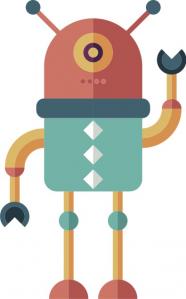Sharing quality teaching and learning in digital technologies

OMG Tech! and the Pam Fergusson Charitable Trust worked with teachers from 13 schools to develop and strengthen teachers’ knowledge and skills in line with the new digital technologies curriculum.
They aimed to:
- ensure students in low socio-economic areas had access to quality teaching and learning in digital technologies and opportunities – to be innovators and informed citizens, rather than merely consumers of digital technologies
- develop confidence in teaching digital technologies
- develop student resources.
Resources and reflections
 Resources
Resources

Courses based on the learning from this programme are being developed for students in years 3–4, 5–6, and 7–8.
The courses will include learning discrete skills, such as sequencing, data representation and iteration, and how computers work. Several design challenges will be interspersed with this learning. For example, a design challenge might ask students how they could use computers to encourage physical activity. OMG Tech! has collaborated with Gamefroot to produce some of these design challenges.
Some of the lessons from the original project will also be available for teachers. One of these lessons integrates numeracy understandings with digital technologies. It includes having the students write code to develop a calculator or coding a speed-distance time machine to calculate the speed of an athlete.
The resources will be available for schools. Register at the link below to receive updates on their progress.
Reflections
Kelly Mattock, a years 5-6 teacher from East Tamaki School, was one of the teachers involved in the programme. She considers herself very much a novice to computational thinking and computer science. Kelly found that the teacher professional development gave her enough confidence to introduce the concepts to her class and from then on they were learning together.
Feedback from her students, which was positive, included: “It doesn't feel like learning because I'm making a game. I understand negative numbers more now from making my own game.”
Kelly has plans to identify ways she can integrate her new knowledge into her current teaching and learning programme and model this to other teachers. The school has plans to continue to work with Chris Clay at OMGTech!.
Kelly believes that the programme would be great to do with a whole school staff so that everyone can get excited and create a collaborative environment to support each other with implementation.
Alan Lyth is Principal at Bairds Mainfreight Primary School. The two teachers who attended the professional development were very enthusiastic and keen to share their knowledge across the school.
One of the approaches could be to have the expert teachers team teach with another teacher for a nominated time during the week. Initially, teachers volunteer to be involved and after a half to two thirds of the school are involved then bring everyone on board. He notes that it is important that the school offers a supportive and collaborative environment to build this expertise.
Robyn Wills from Wymondley Road school is a year 5–6 teacher. She says teachers new to computational thinking and coding, it is not as hard as they might think.
It’s not as hard as you think its going to be. You can do a lot of it paper-based. There are games you can play without the computers that are fun and just playing but do build conceptual understandings. It doesn't have to take a lot of time. Stand alone classes might be a good way to start and build confidence but then we give ourselves and our students the chance to integrate their new knowledge and skills in other learning areas.
Robyn Wills, years 5–6 teacher, Wymondley Road School
Approach

This project was delivered by OMG Tech! and involved teachers from 13 schools in the Otara area.
Two teachers from each school attended a 6-week programme of professional development on teaching and learning in the digital technologies curriculum. This enabled them to distribute digital technologies learning within their schools and across their cluster.
Throughout the programme of professional development, digital technology was integrated into numeracy and literacy lessons and activities. However, further consultation at the end of the programme indicated that there was value in dedicating specific time to the digital technologies curriculum.
Next year, eight schools will trial another approach. Students in years 3–8 will dedicate one block a week (approximately 15 hours each term) to digital technologies learning. To grow teacher knowledge, teachers who have participated in this project will co-teach with another teacher.
Courses are being developed on this basis for students in years 3–4, 5–6, and 7–8.
Note that the programmes and/or resources used within this project are not officially endorsed by the Ministry of Education.
